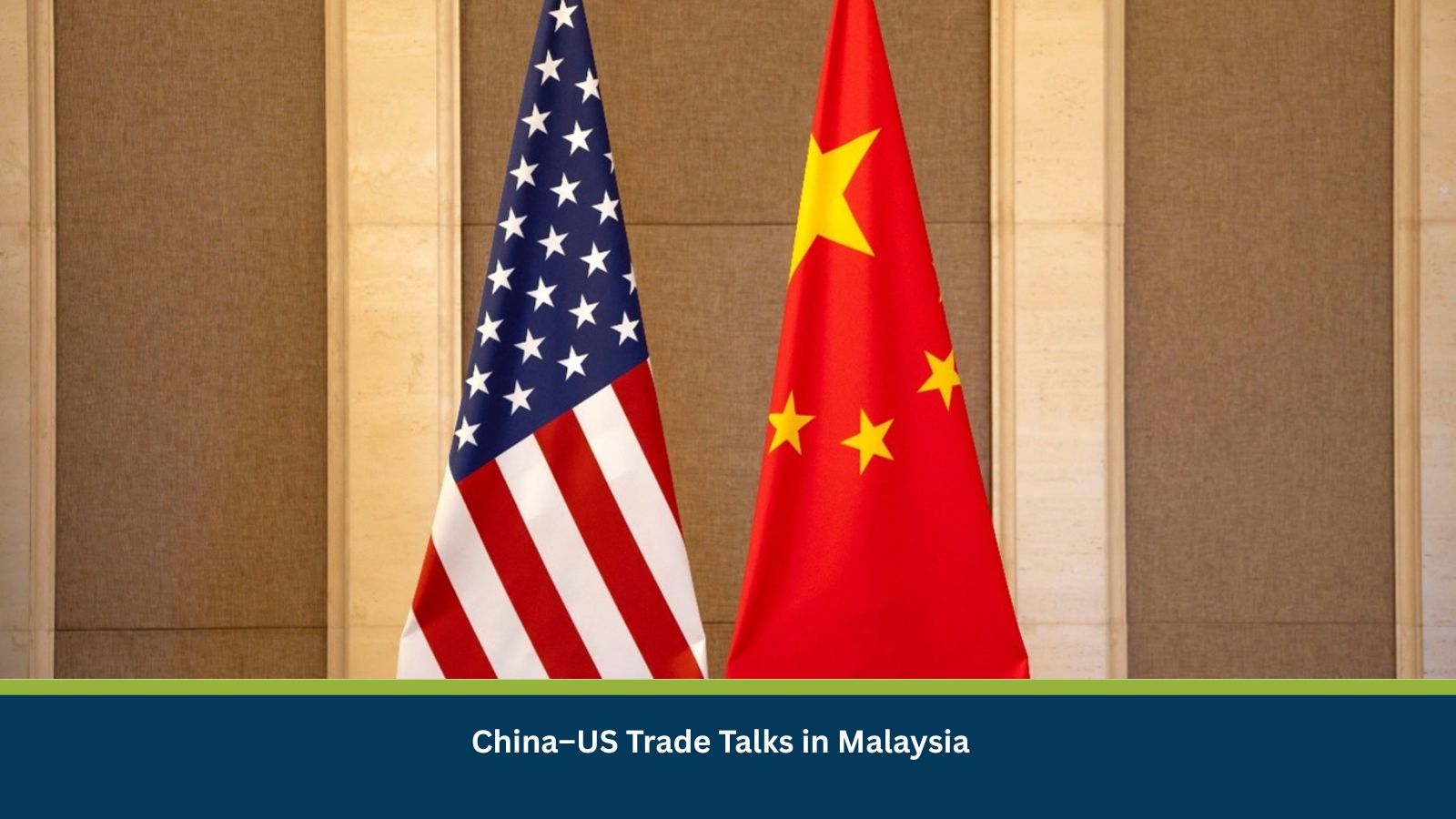High-Level China – US Trade Talks in Malaysia
The China–US trade talks are scheduled to take place in Malaysia from Friday to Monday (24–27 October 2025), as announced by China’s Ministry of Commerce. The talks mark a renewed effort to stabilize US–China economic relations after months of friction over tariffs, export controls, and technology transfer restrictions.
A high-powered Chinese delegation, led by the Vice Premier of the State Council, will meet US officials to discuss key trade and economic issues. The consultations are expected to cover a range of economic concerns including semiconductor trade, rare earth exports, agricultural imports, and market access as both sides seek to find common ground before the tariff truce expires on 10 November 2025.
Background: Renewed Dialogue Amid Persistent Frictions
The China–US trade talks come at a delicate time for global trade. Throughout 2025, US–China economic relations have been characterized by alternating periods of cautious engagement and sharp disputes.
- February 2025: Both sides resumed working-level trade dialogues after a pause, signaling tentative optimism for normalization.
- April 2025: Virtual consultations were held to discuss export licensing and tariff structures.
- July 2025: Tensions resurfaced over new chip and mineral export controls.
- 12 August 2025: A tariff truce extension was negotiated, postponing new tariff hikes until 10 November, thereby creating a limited window for further negotiation.
Despite these developments, both nations continue to compete strategically in areas such as digital infrastructure, renewable energy supply chains, and critical raw materials. The upcoming talks in Malaysia are therefore being seen as a pivotal diplomatic opportunity to prevent another escalation in trade barriers and market volatility.
Anticipated Impact on Businesses and Global Supply Chains
The outcome of the China–US trade consultations will directly influence business confidence across several sectors, especially electronics, manufacturing, and agriculture.
Until negotiations conclude, import- and export-dependent companies are likely to face pricing uncertainty and supply chain delays. Extended indecision may also defer major investment commitments and complicate contractual planning for multinational corporations operating between both markets.
Moreover, the evolving export control frameworks and compliance obligations have created significant operational burdens. Companies dealing with dual-use technologies or cross-border logistics must closely monitor policy statements and adjust procurement strategies accordingly.
The ripple effects are not limited to the US and China. Southeast Asian economies including Malaysia, Vietnam, and Thailand stand to benefit as potential supply-chain alternatives, though they too may face secondary risks if talks fail to deliver clarity.
Recommendations
For Businesses
- Monitor official updates from the US Trade Representative (USTR) at ustr.gov and China’s Ministry of Commerce at english.mofcom.gov.cn.
- Prepare for continued tariff uncertainty until at least mid-November; avoid major procurement commitments tied to volatile import prices.
- Review compliance requirements under both US and Chinese export-control regimes, especially for sensitive or high-technology goods.
- Diversify sourcing networks in anticipation of possible delays or changes in trade policy post-consultations.
For Investors and Policymakers
- Watch for signals regarding extension or termination of the tariff truce, which will likely shape Q4 commodity pricing and currency volatility.
- Evaluate exposure to sectors most affected by the bilateral trade agenda — semiconductors, automotive components, agriculture, and industrial metals.
- Engage with regional trade bodies and chambers of commerce to anticipate regulatory shifts emerging from the Malaysia dialogue.
Conclusion
The upcoming China–US trade talks in Malaysia represent a crucial opportunity to de-escalate one of the world’s most consequential economic rivalries. While expectations remain modest, even incremental progress could help stabilize markets, restore business confidence, and sustain the current tariff truce.
Stay Ahead of Threats with Datasurfr Predict
MitKat’s Datasurfr Predict delivers accurate, real-time, and contextualised data to help organisations respond swiftly to physical, environmental, and cyber threats.
With Sam AI, our AI Agent not only provides context for unfolding events but also analyses vetted historical data to forecast how events are likely to evolve and their potential impact using industry and location-specific probabilistic scores. Book a free demo today and see how Datasurfr Predict can transform your risk preparedness.






